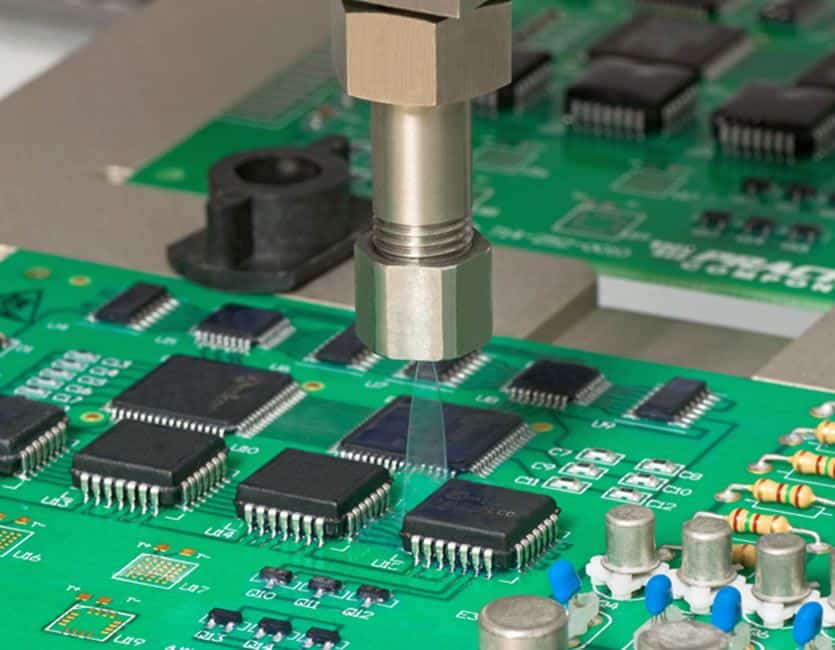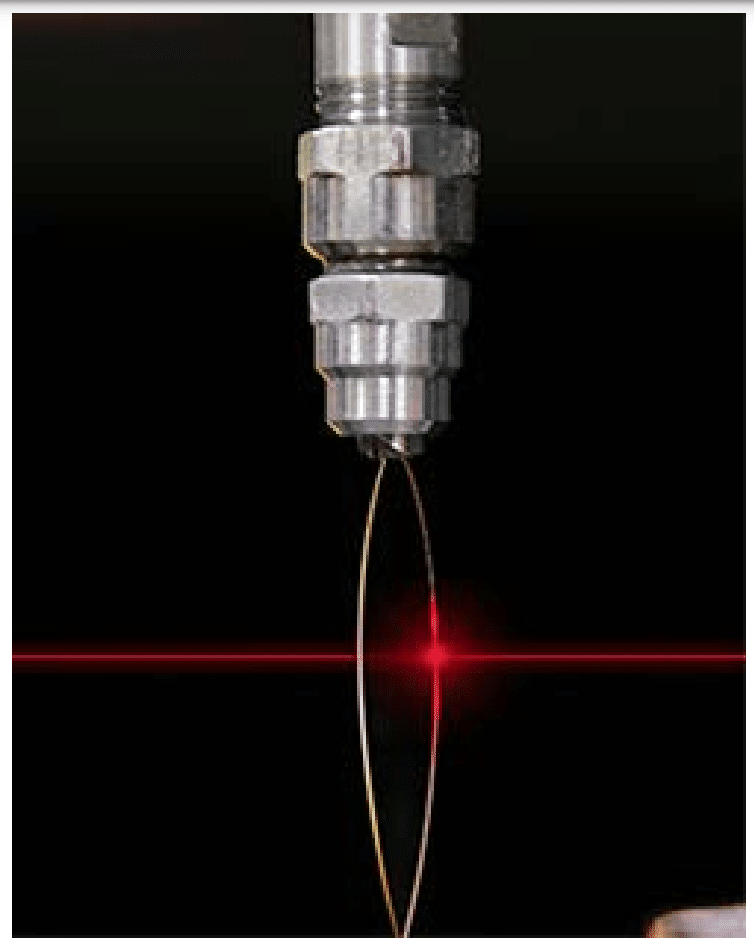Process Control Methods for Conformal Coating
Conformal coating applications present a range of challenges to contract manufacturers and original equipment manufacturers (OEMs). Because of miniaturization trends, more creative dispensing techniques are required to maintain accuracy, repeatability and selectivity.
Many types of conformal coatings are used to protect sensitive electronic circuitry from harsh environments in automotive, commercial, avionics, military and medical markets.

These products come in an endless array of shapes and sizes ranging from large motherboards and complex multi- PCBAs to small modules, tiny PCBs, flex circuits and individual substrates. A growing trend has been the need to address smaller packages, requiring more creative dispensing methods with increased accuracy, repeatability and selectivity.
Popular PCB Protecting Method
Conformal coatings are used to protect all types of electronic circuitry from moisture, dust, chemicals, solvents or other types of harsh environments. Although they measure only a few mils thick, the coatings also are used to dampen the effects of mechanical and thermal stresses and vibrations. Conformal coatings have also been used to impede dendrite growth, a potential cause of short circuits.
Initially, conformal coatings were reserved primarily for expensive aerospace or military applications. Today, however, they are used nearly everywhere. With the explosive growth of portable electronics, increased demand for “smart” consumer appliance controls and continued growth in automotive electronics, conformal coatings are in demand now more than ever.
Because conformal coatings are applied in assemblies that often affect critical functions in the end product, quality and reliability are priorities for the engineers using them.

By reducing variation in the coating process, quality and reliability are achieved. These variations can be reduced through better process control and feedback systems.
Features contribute to better process control for conformal coating
There are 3 features contribute to better process control for conformal coating:
- The Viscosity Control System (VCS)
- Fan-Width Control
- Flow Monitoring
Viscosity Control System (VCS)
A VCS maintains consitent temperature of conformal coating fluids. The system includes a heated re-circuilating fluid circuit to eliminate viscosity changes in temperature-responsive materials. Close-range temperature monitoring keeps the coating process consistent and stable. VOC emissions also may be reduced, depending on the fluid properties. Certain factors such as ambient temperature changes and different material lots cause viscosity fluctuations. These fluctuations affect the performance and consistency of coatings applied to PCBAs.

By controlling the temperature of the conformal coating fluid circuit, viscosity fluctuations can be reduced. In a VCS, fluid is heated and re-circulated while being closely monitored and maintained at set parameters. Temperature parameters are monitored with an over-temperature alarm, as well as precise, closed-loop controls to maintain the process temperature at ±1°C.
Features and Benefits of a Viscosity Control System
| Features | Benefits |
| Accurate temperature settings | Maintains constant applicator fluid temperatures (±1°C). Minimize viscosity changes. |
| Process temperature control | Ensures consistent application. Eliminates influence of ambient temperature fluctuations to minimize viscosity changes. Improved flash-off and reduced tack-free time. |
| Over-temperature alarm | Protects heated system. |
Laser-fan-width
Laser-fan-width control provides closedloop monitoring and control of the conformal coating process. The system automatically verifies and adjusts fan width prior to and/or after the coating operation. Through the use of a laser sensor, the system “looks” at the fan pattern, monitors the results and adjusts fluidfan width automatically (coating pass width). Accuracy is ensured by design. The laser beam makes precise measurements while positioned outside the work cell or dispense area. An auto-calibration feature helps to compensate for beam reflection and lens contamination during operation. Monitoring and controlling the fan width ensures consistent, repeatable coating patterns
There are two primary modes of the laser
fan width: a quick check and a control width. The quick-check feature measures the fan width and will adjust fluid pressure
automatically if the measured fan width is
different than the target fan width, but within a user defined error tolerance. If the measured fan width is outside of user-defined error tolerance, a variety of actions can be taken depending on user programmed instructions.
In control width, the fan is immediately and automatically adjusted to a user-specified width (without “checking” first). The user teaches the routine prior to running production. Fan-width controls typically are programmed at the beginning of a shift, after normal maintenance or as an error procedure for a quick check that failed. During fan-width control, the applicator is moved into position of the laser-sensor beam, and the center and tip of the coater nozzle are found.

The laser sensor monitors the coating pattern width as fluid is dispensed into the drain pan. The software then sends a signal to the pressure controller, increasing pressure to the fluid regulator until the spray pattern breaks the sensor light beam. As the fan pattern breaks the beam, the laser sensor sends a signal to the controller, indicating that the fan spray pattern has reached the required width. Fluid pressure is set and saved. Next, the applicator is moved as it dispenses to either side of the laser beam to confirm the symmetry of the pattern with respect to the centerline of the applicator. If the pattern fits within the softwareconfigurable tolerance, the board is coated.
Laser-fan-width control is easily programmed to monitor fan width per board, or in user-defined intervals. During production, the quick-check feature is used to monitor fan width and make pressure adjustments ‘on the fly.’ The quick-check feature takes fewer than two seconds and will ensure that the fan pattern is within userspecified tolerances before coating a board. For more advanced process control, a VCS can be combined with laser-fan-width control. This combination allows users to perform process checks on the spot and as part of pre-programmed, regular equipment operation. Parameter settings are adjusted automatically, without operator intervention. Flow monitoring is another aid in process visibility for conformal coating. A flow monitor measures the volume of material dispensed on a product against an established target with a resolution of ±0.05 cc. The dispenser’s software logs all data related to the amount of material dispensed to a log file and database.
Flow monitoring confirms that the correct amount of material has been dispensed. The system triggers an alarm condition when dispensed volume is out of range, allowing the operator to make adjustments to prevent possible defective products. By using stainless steel and non-stick construction, the flow monitor will be compatible with virtually all conformal coating materials. Flow monitoring occurs during production without affecting the cycle rate or increasing material usage. The operator is alerted when an adjustment is required to prevent possible defects. As in other manufacturing processes, the key to quality and reliability in conformal coating is process control. Fortunately for process engineers, multiple automated tools are available to assist them. Having an automated coating system that can control viscosity, measure and control fan width, as well as monitor the flow of material, makes the task that much easier.
For more information, please contact GLUDITEC:
Hotline: (+84) 969 469 089
Email: info@gluditec.com